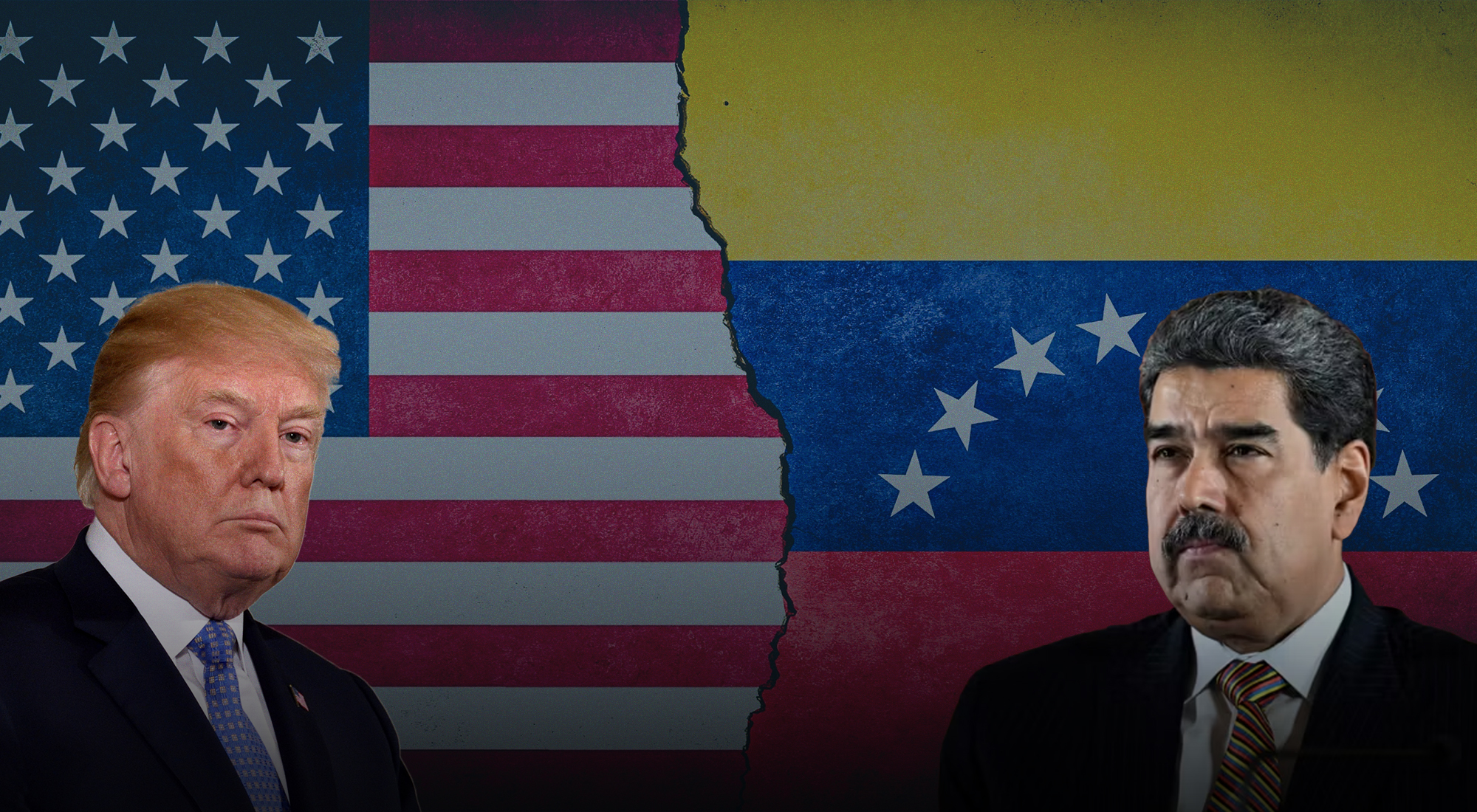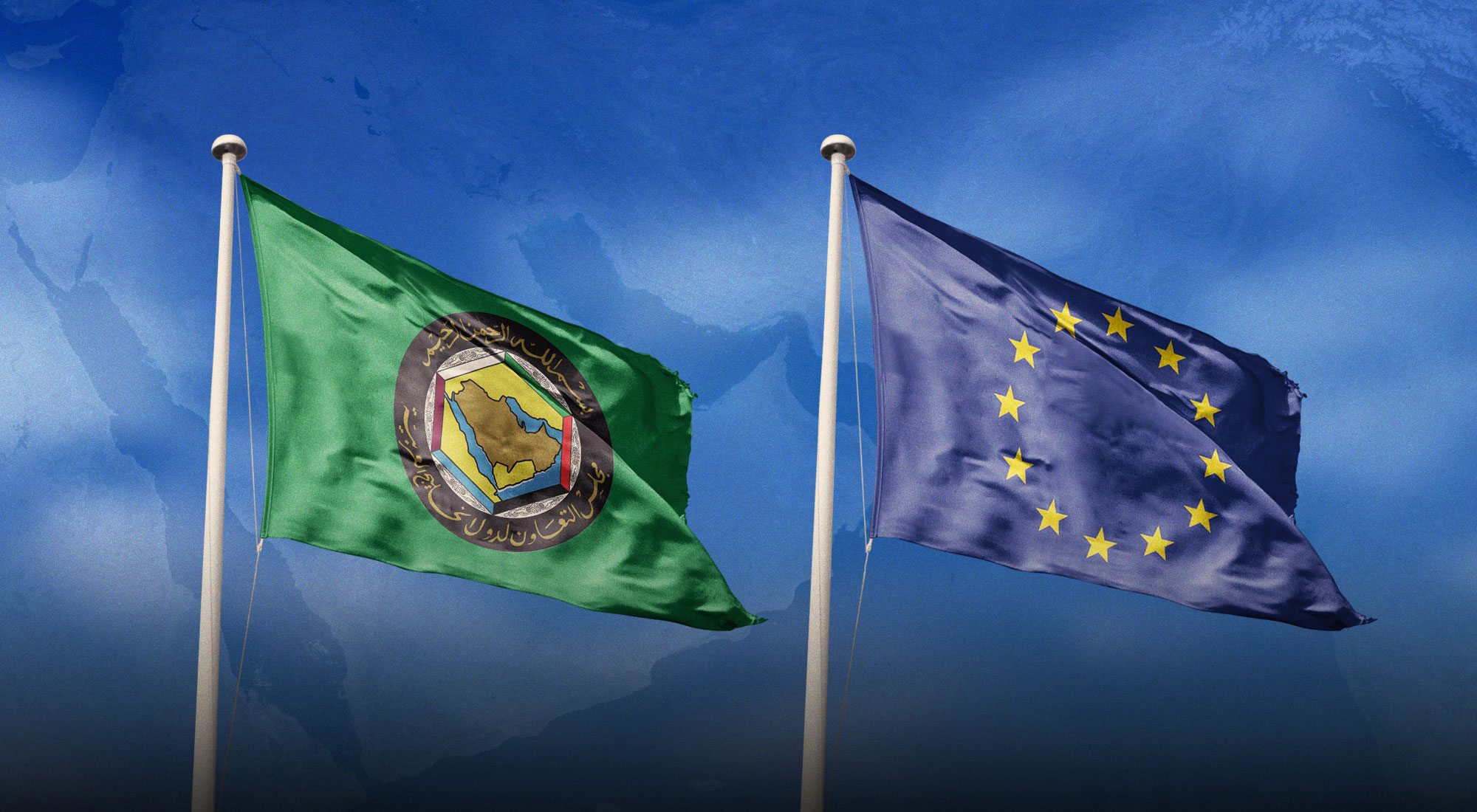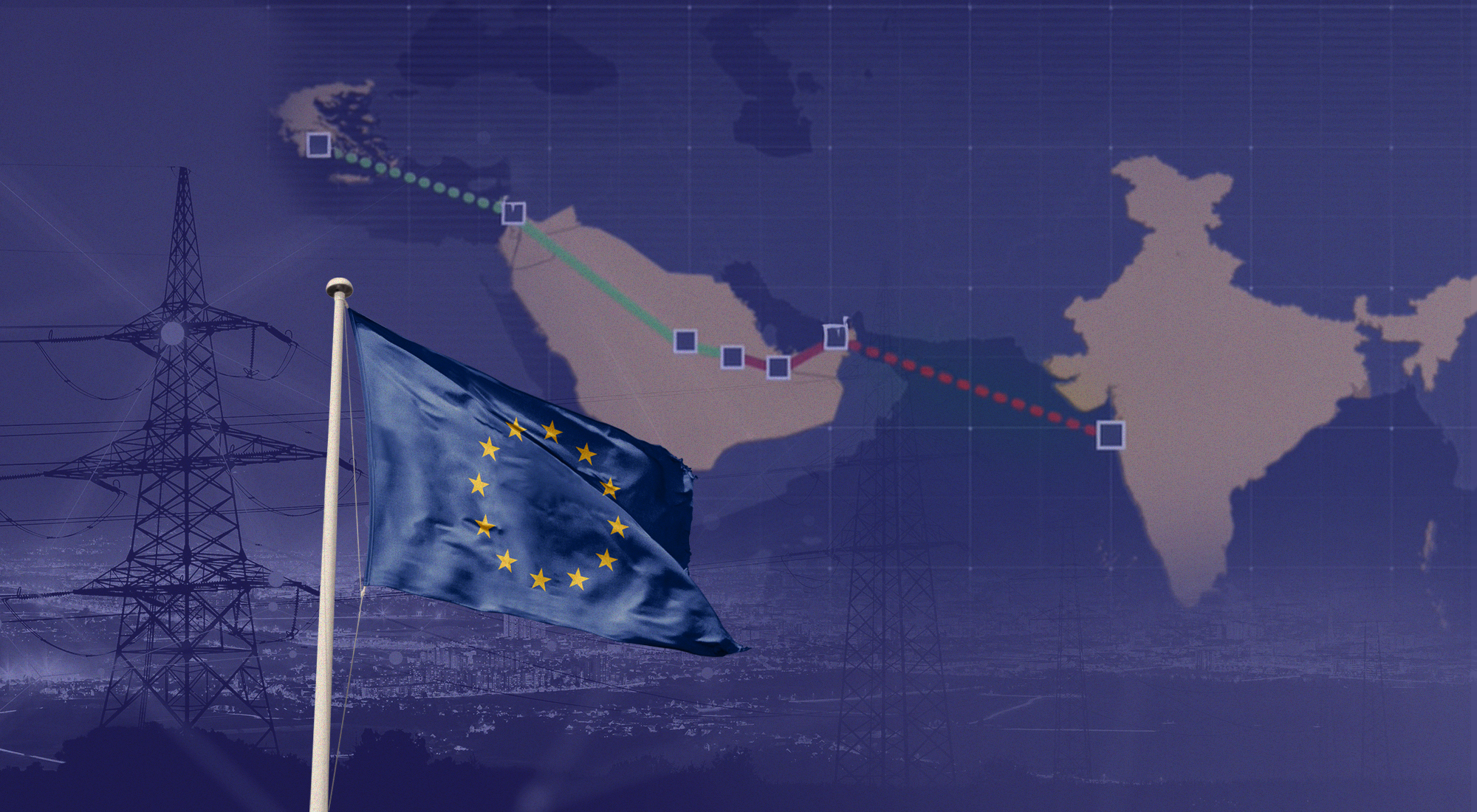Jerusalem: The eternal capital
Jerusalem is a city that stirs strong feelings. Very different people, groups and States claim to have some kind of bond – and therefore right – to it. Depending on the narrative involved, these bonds and rights may be mutually exclusive, further complicating the issue. For example, Arab States such as Jordan, Saudi Arabia and Morocco have actively sought to intervene in the Holy Places question. Both the Jordanian and the Moroccan monarchies have done so to increase their legitimacy and revitalize their Sharifian credentials.[1] This usually happens by donating money for the renovation of the Holy Places or by remarking their support to Palestine. The Saudi dynasty has taken similar actions at least since the 1990s, such as when King Fahd offered to contribute to the renovation of the Haram al-Sharīf.[2] Jordan (or rather the Hashemite dynasty) is better placed than others in this quiet competition; its claim of a “custodianship” over Christian and Muslim holy sites in Jerusalem is recognised (if sometimes begrudgingly) by the main actors in the conflict, including Israel, the Palestinian Authority, the United States of America, the European Union, and the Arab League.
When it comes to the Israeli-Palestinian conflict itself, both parties claim Jerusalem as their “eternal” capital. Israel formalized this claim in June 1967, after the Six Day War, by approving two laws that extended Israeli jurisdiction to those parts of Eretz Yisrael that came under State control – i.e., the newly conquered territories, including East Jerusalem. A third law (Protection of Holy Places Law 5727-1967) concerns the protection of and freedom of access to the Holy Places, charging the Minister of Religious Affairs with the implementation of the law.[3] Although the main Palestinian factions generally agree that Jerusalem is Palestine’s capital, their claims may vary subtly. For example, Hamas – which currently controls the Gaza Strip but is generally considered to have a strong standing in the Arab sectors of Jerusalem[4] – maintains “its commitment to the international law and the UN resolutions” and “calls for everyone to have a look at the history of Jerusalem in order to read about the golden era of justice and freedom of worship for all divine religions in the holy city under the Islamic rule.”[5] In other terms, Hamas lays claim to the whole of Jerusalem – even the Jewish-Israeli neighborhoods. On the other hand, the Palestinian Authority mostly mentions “East Jerusalem” as the “eternal capital of the State of Palestine,”[6] thus omitting the Jewish-Israeli parts of Jerusalem. The Palestinian Authority’s statements are actually in line with the United Nations General Assembly resolutions on the issue, which have consistently mentioned (just) “East Jerusalem” as “Occupied Palestinian Territory”, implying that the rest of the city is not part of Palestine.[7]
The issue is so contentious that negotiators are generally quick to postpone discussion on it (indefinitely, given the current state of talks).[8] Nonetheless, the debate outside official negotiations has always been quite lively, allowing for proposals that may be unthinkable and unacceptable to some of the stakeholders. In particular, the idea of sharing Jerusalem is unpalatable to many, in part due to the aggressively nationalist rhetoric coming from both sides of the conflict. Even so, Jerusalem is already de facto shared by the Israeli and Palestinian peoples, as well as by the faithful of the three major monotheistic religions.[9] Israel has controlled the whole of Jerusalem and its surroundings since the 1967 war, including the Old City and the Temple Mount/al-Haram al-Sharīf complex. While Israel claims sovereignty over the whole area, then defense minister Moshe Dayan agreed to maintain the status quo, leaving the complex to an Islamic Waqf while acknowledging Jordan’s guardianship role. The 1994 Israel-Jordan peace treaty confirmed Jordan’s “special role” in “Muslim holy shrines in Jerusalem.” General security rests with Israel – whose forces stand outside the complex – while internal guarding falls to (Jordan through) the Waqf. Of the fifteen existing gates, ten are currently open; non-Muslims may use only one of them (the Mughrabi gate). The Waqf holds all the keys to the complex, except for the Mughrabi ones; however, they may open or close the gates only with the permission of Israeli forces. Jews, who before the Israeli conquest could not access the site, may now enter the compound, but they are still forbidden to pray there (by both Jewish and secular authorities).
Such a fragile situation may not necessarily work out and it is not unusual to hear of clashes in the city, especially in proximity of religious or national holidays. For example, in 2017, widespread protests followed Israel’s decision to install metal detectors (later removed) at the entrance of the compound for security reasons. The 2021 Israel-Palestine crisis was triggered by the anticipated eviction of Palestinian families in the Sheikh Jarrah neighbourhood, later worsened by the storming of the al-Aqsa mosque on May 7 and the widespread violence that erupted between May 8 (Qadr night, which is important for Muslims) and May 9 (Jerusalem day, an Israeli national holiday commemorating the 1967 conquest of the city). Nonetheless, the significance of Jerusalem is so great for so many people that finding a modus vivendi entailing a shared city may very well be the only sustainable framework for lasting peace and the serene coexistence of the two peoples.

Figure 1: Jerusalem’s shifting borders

Figure 2: Jerusalem Old City
Shared sovereignty and shared Jerusalem
Most of the plans to share Jerusalem assume it is possible to distinguish the right to sovereignty from the power to actually administer the city (managing the registry office, providing water and electricity services, holding elections, etc.). After the 1967 war, Teddy Kollek – who would be the Israeli mayor of the city for almost thirty years – started envisaging his own solution. Since no Israeli was “willing to give up Jerusalem,” he proposed for the Arabs to recognise Jerusalem as the capital of the State of Israel in exchange for a very wide autonomy in managing the non-Jewish neighbourhoods.[10] Taking inspiration from the London municipal model of boroughs, his plan envisioned a “functional sovereignty,”[11] in which Arab citizens controlled their own part of Jerusalem by electing dedicated municipal councils, without any physical division of the city. In this way, the Arabs would have both benefited from the Israeli wealth and maintained the right to self-government on education, welfare, sanitation, and the Holy Places.[12] Unsurprisingly, this proposal was never accepted by the Palestinians, since it meant admitting a definitive Israeli victory over Jerusalem. Nonetheless, Kollek’s plan was important for two reasons: (1) it was one of the first Israeli attempts to find a compromise on the city after the war, and (2) the “municipal” model would strongly influence many subsequent proposals.
Later solutions revolved around dividing the city between the so-called “western” and “eastern” parts, while making sure that such division would somehow be invisible. For example, in the ‘90s, the Jordanian-Palestinian diplomat Adnan Abu Odeh noted how the Old City of Jerusalem had a “God-given holiness.” However, such gift was not extensible to the “New City” – the structures built outside the 16th century walls “in response to population growth.”[13] The Old City, belonging “to the three religions and the whole world,” could not be subject to any statal sovereignty. In practice, it would be managed by a council composed of Jewish, Christian, and Muslim representatives, with both the ordinary functions of any municipal government and the peculiar duty of guaranteeing free access to the Holy Places. On the other hand, the extra-moenia Arab neighbourhoods would be called “al-Quds” and become the capital of Palestine, while the Jewish neighbourhoods would be referred to as “Yerushalayim” and officially recognised as the Israeli capital.[14] It may be useful to note that these are the names of Jerusalem respectively in Arabic and Hebrew. Even so, Jerusalem as a whole would neither be physically divided, nor lose its multicultural character; the people living in the Old City would keep their own original citizenship, free movement would be ensured between the three areas, and all the municipal services would be provided by a unitary system.[15] This scheme was also the backbone of the “Jerusalem Old City Initiative” – a peace plan elaborated by three Canadian former diplomats fleshing out Abu Odeh’s idea.[16]
A further proposal, by Moshe Amirav (former councilman of Jerusalem) and Hanna Siniora (member of the Palestine National Council), envisaged a shared sovereignty between Israel and Palestine by considerably extending Jerusalem’s municipal boundaries up to Bethlehem, Maʿale Adumim and even Ramallah. This would ensure a territorial and demographic equilibrium between the Israeli and Palestinian components of Jerusalem, as well as satisfy the ordinary need for expansion of any metropolis.[17] The plan breaks down sovereignty into “areas”, some of which would be yielded to special municipal institutions.[18] For example, the “Metropolitan Assembly of Jerusalem” – elected by the Jerusalemites – would hold competences over police, construction, education, healthcare, and lesser crimes. On the other hand, Israel and Palestine would retain full powers over legislation, internal security, foreign relations, money issuance, and jurisdiction for serious crimes (using the locus commissi delicti criterion; for example, such a crime committed in a Palestinian municipality would be judged by Palestine). The Old City would have its own municipality with special competences, with the Holy Places managed by religious representatives. In any case, freedom of movement would be guaranteed in the whole Jerusalem.[19] This model would be further explored by Sari Nusseibeh and Mark Heller in the ‘90s. For example, religious issues could be solved through personal status laws, similar to the Ottoman millet system. Alternatively, they argued for the two States to cooperate with the municipalities to draft a legal code for Jerusalem.[20]
John Whitbeck, an international lawyer, argued in 2000 that sovereignty was a “psychological” issue and therefore proposed a condominium between Israel and Palestine over a unified city, so that each could claim to be the sovereign of the whole of Jerusalem. Whitbeck pointed out that the idea of joint sovereignty was not alien to international law, with examples such as the Indian city of Chandigarh (split between the two states of Punjab and Haryana, and the capital of both). The sovereignty issue would be kept separate from city management, by applying extensively the subsidiarity principle (whereby services are provided by the public authority that is closest to citizens, meaning higher authorities would deal with issues in a “subsidiary way” only when lower authorities are unable to). Accordingly, most of the competences would be attributed to a common council, supported by a series of minor municipalities overlapping with the current neighbourhoods of Jerusalem. As for the legal system, it would be enough to agree upon the applicable law (either Israeli or Palestinian) through territorial or personal criteria.[21]
The “Geneva Initiative” – developed by former Israeli and Palestinian politicians – proposed instead a comprehensive solution to the conflict in the early 2000s. In Annex 05, it argued for the partition of Jerusalem so that all the Jewish neighbourhoods (including the one in the Old City) would be under Israeli sovereignty under the name of “Yerushalayim”, the capital of Israel. On the other hand, all the Arab neighbourhoods, including the rest of the Old City, would be under Palestinian sovereignty under the name of “al-Quds”, the capital of Palestine (Geneva Accord, Article 6 Par. 4). The “Western Wall” would be part of Yerushalayim and thus Israel (Article 6, Par. 6), while the rest of al-Haram al-Sharīf/Temple Mount would belong to Palestine, although it would be managed, at least in the beginning, by an “international group”. Such group would include, inter alia, the UN and the Organisation of Islamic Cooperation –whose main duty would be to resolve disputes about the area and prevent constructions not previously agreed (Article 6, par 5). Israel and Palestine would guarantee free movement between the two capitals, subject to security checks through an articulated system of gates.
Lastly, the Jerusalem Institute for Israel Studies (JIIS) delineated a “sacred basin” for Jerusalem, covering the Old City and the Holy Places that lay outside of it (e.g., the Cenacle, Gethsemane, etc.). The institute argues that this basin has such symbolic and religious importance that it would be naïve to expect reciprocal concessions on it. For this reason, it is necessary to share it between the two States, whereby an international body (comprised also of Israeli and Palestinian representatives) would manage municipal services, guarantee security, and settle the inevitable disputes.[22]
None of these proposals ever came to fruition, for different reasons. A first, very relevant point is that all these plans were proposed informally, mostly to stir up debate. At best, they inspired future official discussions, if negotiators found them feasible and convenient enough. Moreover, the plans concocted by Kollek, Abu Odeh and Whitbeck were offered unilaterally, without involving the other sides to the conflict. On the other hand, the Amirav-Siniora model and Geneva Initiative, did involve both Israeli and Palestinian figures (in an unofficial capacity nonetheless), thus they might have had a higher chance of success, if not for the deterioration of the Oslo peace process starting from the mid-‘90s. The JIIS study came to a similar standstill due to the lack of fruitful negotiations at the time of the proposal.
Lastly, and perhaps most importantly, most of these proposals (save for Kollek’s one) envisage some degree of shared sovereignty over Jerusalem. To put it differently, these plans require the Parties to make heavy concessions over the future of the city; however, any Party still believing it could obtain the whole of Jerusalem (either militarily, through a different agreement, or simply by maintaining the status quo) would have no reason to make such concessions.
The trouble in sharing God
Having summed up some of the most interesting plans for sharing Jerusalem, proposed in recent times, it is possible to draw conclusions. First of all, these plans all assume that the neighbourhoods outside the 16th century walls do not enjoy the historical, cultural, and religious values attributed to the “Old City”, except for some specific Holy Places that were originally outside Jerusalem but were later engulfed by the expanding metropolis. In this sense, notwithstanding the nationalist rhetoric, the Parties may very well accept – after some tough negotiations – to assign the Jewish-majority neighbourhoods in Jerusalem to Israel and the Arab-majority ones to a Palestinian State. It is also useful to recall that both the international community and the Palestinian Authority consistently talk about “East Jerusalem”, implying that the “western” part is not a red line for them. The concerned areas could consequently constitute the capitals of the two States, with their respective parliamentary, executive and judiciary seats.
The more “radical” proposals, entailing an actual joint sovereignty over the city, would in theory achieve the same results. However, it is difficult to imagine the Parties agreeing on something like this anytime soon. The examples pointed out by Whitbeck, such as the Indian city of Chandigarh, are hardly transposable to Jerusalem’s context. Sharing Chandigarh is in fact possible thanks to the overarching Indian federal system that binds Haryana and Punjab together. In this regard, imagining a federal solution for the Israeli-Palestinian conflict might make this kind of plan slightly more plausible. In any case, talking about the attribution of areas based on ethnic and religious majorities could encourage the worst instincts in the Parties and foster (further) forced displacement, evictions, and expropriations in the “most desirable” neighbourhoods.
Even so, the real problem emerges when one collides with the reality of the Old City, which is the beating heart of Jerusalem. Here, the classical scheme of territorial sovereignty stops being useful. In particular, dividing the four quadrants of the walled city (for example, the Jewish one to Israel and the remaining ones to Palestine) may prove to be impossible. First of all, as Kollek states, it is unlikely you will find any Israeli “willing up to give up Jerusalem” and it is equally unlikely that any Palestinian will forfeit even a single stone of the “true and holy” Jerusalem, as Abu Odeh puts it. Moreover, even if the Parties accepted splitting sovereignty over (just) the Western Wall (to Israel) and al-Haram al-Sharīf/Temple Mount (to Palestine), these buildings would still be part of a single and unitary complex, which is hardly separable à la carte. Soon enough, all kinds of quarrels would emerge over which activities could be performed in their own piece of the structure.
For this reason, the idea of a joint nominal sovereignty over the Old City, with a city council managing it for practical purposes, could be the most sustainable solution in the long run, since the inevitable disputes would be solved at a local level by religious and local representatives. As an alternative, this part of Jerusalem (or even just the Holy Places) could be managed by an international body that guarantees religious and local representation. By bypassing the issue of sovereignty, this would de facto reach the “functional internationalization” at times proposed by Israel. However, any international intervention should be considered only bearing in mind the caveat posed by the JIIS itself: while “an international body may indeed play a significant role … [it] does not constitute a miracle cure removing all the obstacles [in implementing an agreement].”[23] In other words, such an intervention must be agreed upon by the two Parties and will only work within a comprehensive solution to the wider Israeli-Palestinian conflict.
More in general, any proposal for Jerusalem cannot be considered separately from the overall peace plan, including the crucial issue of the security of the two States. Far from having only historical and religious importance, the city holds strategic military value too, since it is situated at a crossroad in the Middle East and lies at the top of the Hebron/Judaean mountains, dominating the surrounding valleys on its eastern and western sides. It is therefore easier to target potential invading armies from either the east or west, and to protect the coastal plains – which are Israel’s most populated areas – providing the Jewish State with much-sought strategic depth. The elevation of the city is also useful in collecting intelligence in all directions.[24] This adds a layer of complexity to an already difficult situation and also explains why even non-religious Israeli generals are reluctant to negotiate the issue. The only possible solution to this problem is to cut the Gordian knot. That means pacifying the whole area over time through, for example, the strengthening of economic ties between the surrounding States so much so that in the long run it would become counterproductive to continue fighting – just as the European peoples did more than half a century ago. Evidently this includes some sort of settlement that is satisfactory for the Palestinians too. While this may seem absurd now, the Middle East is not a static area, as the Abraham Accords have recently proven. Ultimately, a solution is possible and both international law and politics offer a wide range of instruments to sustain peace, as long as all the Parties are willing to engage. If such a solution were reached, Jerusalem could truly claim to be, both in name and in practice, the “city of peace”.
References[1] Jordan is officially known as the “Hashemite Kingdom of Jordan”, which is ruled by the Hashemite dynasty. The “Kingdom of Morocco” is ruled by the ‘Alawi dynasty. Both lineages claim descent (through different people) from Prophet Muhammad or from His family.
[2] Jon Seligman and Yitzhak Reiter, “1917 to the Present: Al-Haram al-Sharif/Temple Mount (Har ha-Bayit) and the Western Wall,” in Where Heaven and Earth Meet: Jerusalem’s Sacred Esplanade, ed. Oleg Grabar and Benjamin Z. Kedar (Jerusalem: Yad Ben-Zvi Press, 2009): 262.
[3] Netanel Lorch, Major Knesset Debates, 1948-1981 (Lanham: University Press of America, 1993): 1608-1609.
[4] Khaled Abu Toameh, “Why is Hamas Popular in Jerusalem? – Analysis,” The Jerusalem Post, November 21, 2021, https://www.jpost.com/arab-israeli-conflict/why-is-hamas-popular-in-jerusalem-analysis-685596.
[5] Palestinian Islamic Resistance Movement Hamas, “The City of Jerusalem is the Eternal Capital of the State of Palestine,” Hamas, https://hamas.ps/en/page/2/The-city-of-Jerusalem-is-the-eternal-capital-of-the-state-of-Palestine (accessed August 12, 2022).
[6] “President Abbas at a Conference: Jerusalem Is Not for Sale,” WAFA News Agency, 8 June, 2022, https://english.wafa.ps/Pages/Details/129585.
[7] The United Nations General Assembly has mentioned “occupied East Jerusalem and the rest of the Occupied Palestinian territory”, at least since its Resolution ES-10/2 of April 25, 1997. This expression has become recurrent in the UNGA resolutions concerning Jerusalem. Similarly, the United Nations Security Council has made reference to “Palestinian territory occupied since 1967, including East Jerusalem”, for example, in its Resolution S/RES/2334 (2016).
[8] The first matter to be addressed is which entities would emerge after the deal itself: for example, one State (either Israel or Palestine, with the latter possibly being absorbed by Jordan); two States (possibly Israel and Palestine); or a new federal entity comprising both Israel and Palestine. The two-State solution has been the preferred option in official negotiations for a long time, even though polls reveal growing opposition to such a settlement from both Israeli and Palestinian societies (see Daniel Egel, C. Ross Anthony, Shira Efron et. al., Alternatives in the Israeli-Palestinian Conflict (Santa Monica, CA: RAND Corporation, 2021): 107-110, https://www.rand.org/pubs/research_reports/RRA725-1.html; cfr. Palestinian Centre for Policy and Survey Research, “Public Opinion Poll No (82),” PSR, December 8-11, 2021, https://www.pcpsr.org/en/node/866. Other main issues that have been discussed include mutual recognition and the borders of the respective States; the future of Israeli settlements in the West Bank; security, including a potential Palestinian army; and the future of refugees in the Palestinian diaspora (also known as the “the right to return” issue).
[9] “Gates,” Masjid Al Aqsa, https://masjidalaqsa.net/gates/ (accessed August 13, 2022).
[10] Teddy Kollek, “Jerusalem,” Foreign Affairs 55 (July 1977): 715-716, https://www.foreignaffairs.com/articles/israel/1977-07-01/jerusalem.
[11] Teddy Kollek, “Jerusalem: Present and Future,” Foreign Affairs 59 (Summer 1981): 1048-1049, https://www.foreignaffairs.com/articles/israel/1981-06-01/jerusalem-present-and-future.
[12] Teddy Kollek, “Sharing United Jerusalem,” Foreign Affairs 67 (Winter 1988/1989): 167-168, https://www.foreignaffairs.com/articles/israel/1988-12-01/sharing-united-jerusalem.
[13] Adnan Abu Odeh, “Two Capitals in an Undivided Jerusalem,” Foreign Affairs 71 (Spring 1992): 186, https://www.foreignaffairs.com/articles/israel/1992-03-01/two-capitals-undivided-jerusalem.
[14] Ibid., 186-188.
[15] Adnan Abu Odeh, “Religious Inclusion, Political Inclusion: Jerusalem as an Undivided Capital,” Catholic University Law Review 45, no. 3 (Spring 1996): 693-694, https://scholarship.law.edu/lawreview/vol45/iss3/4.
[16] Tom Najem, “Epilogue,” in Track Two Diplomacy and Jerusalem: The Jerusalem Old City Initiative, eds. Tom Najem, Michael James Molloy, Michael Dougall Bell and John Bell (London: Routledge, 2017): 287.
[17] Moshe Amirav and Hanna Siniora, “Risolvere l’irresolubile,” In La Questione di Gerusalemme: Profili Storici, Giuridici e Politici (1920-2005), ed. Paolo Pieraccini (Bologna: Il Mulino, 2005): 365-367.
[18] Ibid., 363.
[19] Ibid., 367-371.
[20] Mark Heller and Sari Nusseibeh, No Trumpets, No Drums: A Two-State Settlement of the Israeli-Palestinian Conflict (New York: Hill and Wang, 1991): 122-123.
[21] John V. Whitbeck, “Jerusalem: A Condominium Solution,” Global Dialogue 2, no.2 (Spring 2000): 127-128.
[22] Ruth Lapidoth and Amnon Ramon, The Historic Basin of Jerusalem – Problems and Possible Solutions, The Jerusalem Institute for Israel Studies (2010): 117-119, https://jerusaleminstitute.org.il/en/publications/the-historic-basin-of-jerusalem-problems-and-possible-solutions/.
[23] Ibid., 76.
[24] “The Strategic Importance of Jerusalem,” The Jerusalem Institute for Strategy and Security, https://jiss.org.il/en/the-strategic-importance-of-jerusalem/ (accessed August 17, 2022).








